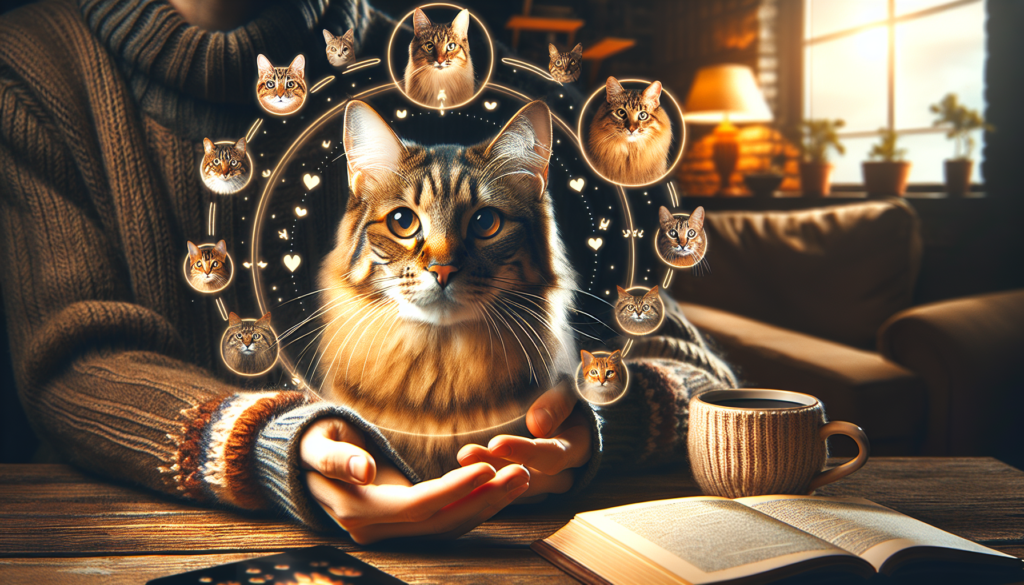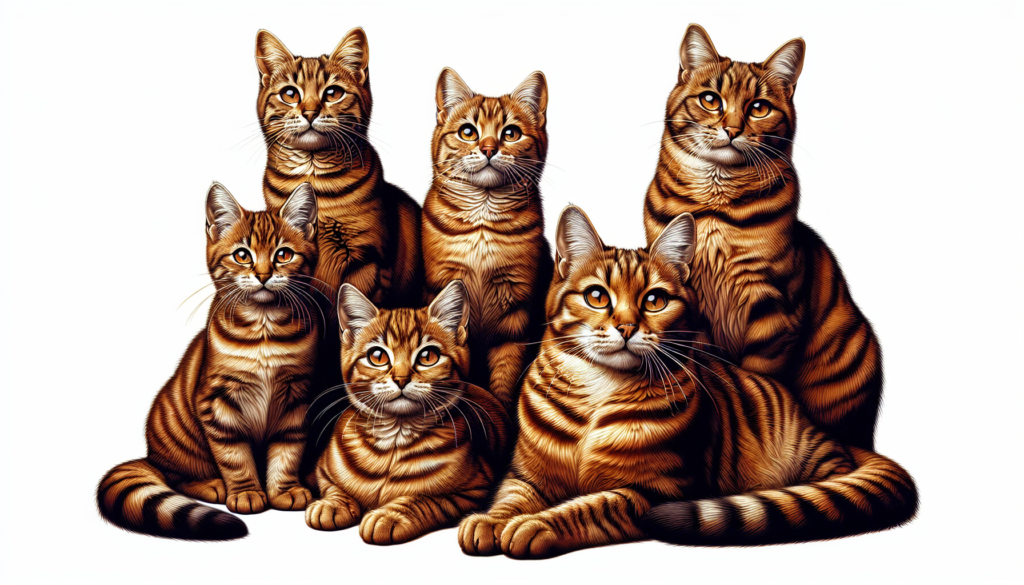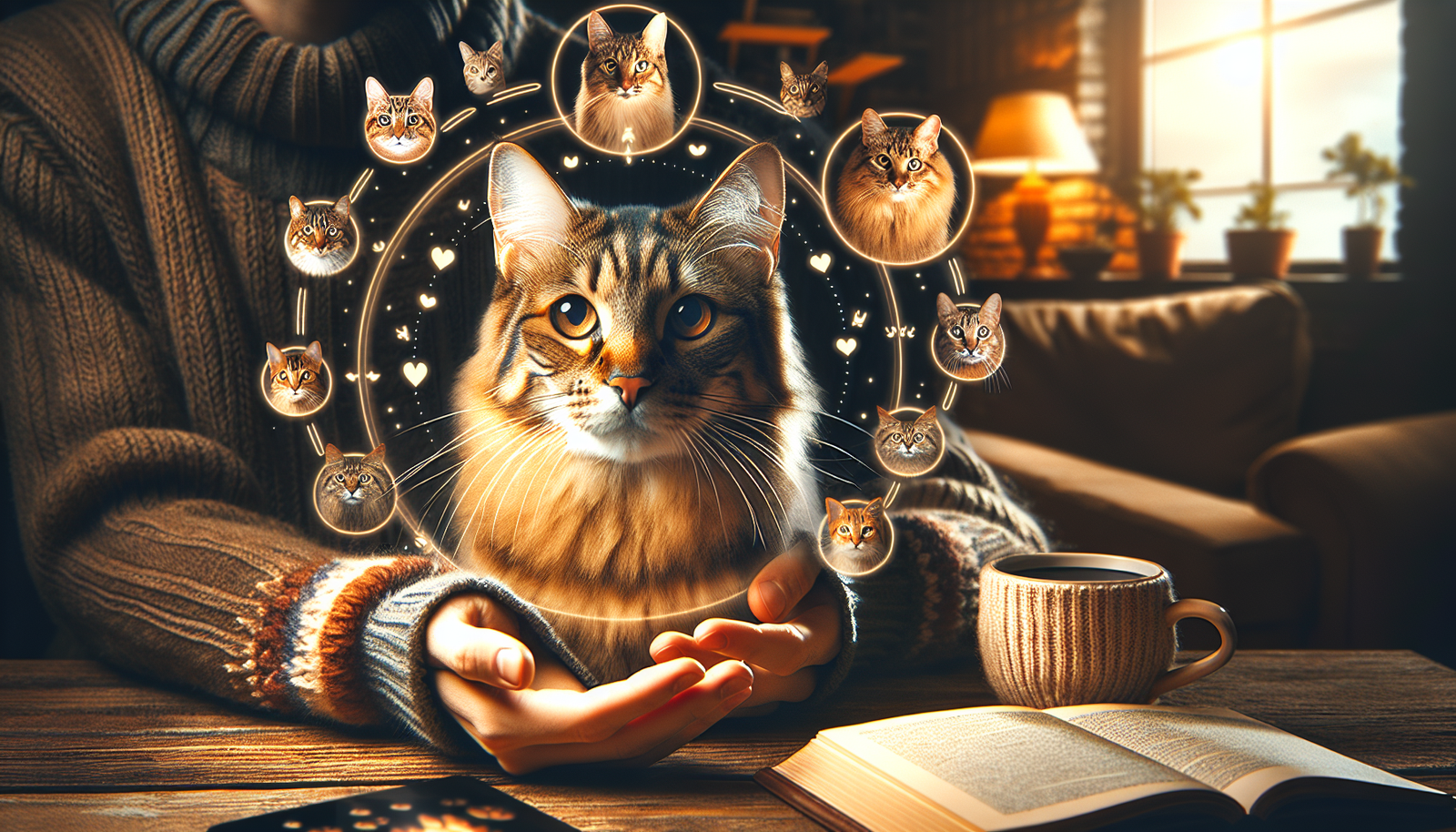Are you curious about the rarity of tabby cats, especially the female ones? Well, you’ve come to the right place! In this article, we’ll explore the question of whether tabby cats, particularly female ones, are considered rare. Tabby cats have a distinctive coat pattern that showcases a beautiful blend of stripes, spots, and swirls, making them incredibly popular and sought after as pets. Stay tuned to find out if these magnificent felines are truly a rare find or if they’re more common than you might think!
What are tabby cats?
Tabby cats are a popular and beloved feline breed known for their distinctive coat patterns. They make up the largest percentage of domestic cats, with their unique markings and charming personalities capturing the hearts of cat lovers around the world. Whether you have owned a tabby cat or simply admired them from afar, it’s worth understanding their defining characteristics, patterns, colors, genetics, and even their rarity.
Definition of tabby cats
Tabby cats are not a specific breed, but rather a description of their coat pattern. The term “tabby” refers to the pattern on a cat’s fur rather than a specific breed. These patterns can vary greatly and are determined by the genetic makeup of the cat. Tabby cats can be found in various cat breeds, both purebred and mixed breeds, highlighting their widespread presence in the feline world.
Distinctive features of tabby cats
While tabby cats can come in a range of colors and patterns, they share some common features that set them apart from other coat patterns. Tabby cats typically have an “M” marking on their forehead, which is believed to be a nod to their ancient ancestry. They also often display a lined pattern on their cheeks and distinctive stripes or swirls along their body. These features contribute to their unique and visually appealing appearance.
Different tabby patterns
Tabby cats can display several different patterns on their coats, each with its own distinct characteristics. Let’s explore some of the most commonly seen tabby patterns:
Classic tabby pattern
The classic tabby pattern, also known as the blotched tabby, is characterized by bold, swirling patterns on the cat’s fur. These swirls can resemble large bullseyes or marbled markings, creating a striking and eye-catching appearance. The classic tabby pattern is often associated with the well-known “flying saucer” shape on the cat’s sides.
Mackerel tabby pattern
The mackerel tabby pattern is recognized by its vertical stripes that resemble fishbones, hence the name “mackerel.” These narrow and straight stripes run vertically down the cat’s body, creating a sleek and elegant look. The mackerel tabby pattern is often found in breeds such as the Abyssinian and the Maine Coon.
Spotted tabby pattern
As the name suggests, the spotted tabby pattern features distinctive spots instead of stripes. The spots can vary in size and shape, ranging from small round dots to larger irregular spots. Cats with this pattern often have a wild and exotic appearance, reminiscent of their distant relatives in the animal kingdom.
Patched tabby pattern
The patched tabby pattern, also known as the tortoiseshell tabby pattern, combines the tabby pattern with splashes of color. This results in a unique combination of patches or swirls of various colors spread across the cat’s coat. The patched tabby pattern is more commonly seen in female cats due to their genetic makeup.
Ticked tabby pattern
The ticked tabby pattern is characterized by individual hairs banded with different colors, giving the fur a finely stippled or “ticked” appearance. This pattern is most commonly observed in breeds such as the Abyssinian or the Somali. The ticked tabby pattern creates a stunning shimmering effect on the cat’s coat when observed up close.

Tabby cat color variations
Tabby cats come in a wide array of colors, each contributing to their unique charm and appeal. Here are some of the most commonly seen tabby cat color variations:
Brown tabby cats
Brown tabby cats are perhaps the most familiar and commonly seen color variation. Their coats range from warm tones of sandy brown to deeper shades of mahogany. The brown tabby pattern is often accompanied by bold black stripes, enhancing the cat’s overall appearance.
Red tabby cats
Red tabby cats, often referred to as ginger or orange tabbies, boast vibrant shades of reddish-orange throughout their fur. Their coats can vary in intensity, from light ginger hues to deep and fiery shades. The red tabby pattern is especially common in male cats, with the gene linked to coat color found on the X chromosome.
Silver tabby cats
Silver tabby cats are known for their stunning silver or grayish coat color, often accompanied by contrasting black markings. The silver tabby pattern creates an elegant and regal look, adding a touch of sophistication to these already captivating felines.
Blue tabby cats
Blue tabby cats exhibit a dilution of the black pigmentation, resulting in a cool bluish-gray coat color. This color variation is often associated with a diluted or lighter version of the classic tabby pattern, creating a soft and striking appearance. Blue tabby cats are frequently sought after for their unique and serene coloring.
Cream tabby cats
Cream tabby cats, also known as buff tabbies, exhibit a creamy or off-white coat color. The cream tabby pattern can vary, but it often includes warm undertones of orange or gold. These cats exude a gentle and soft color palette, making them irresistibly charming.
Tabby cat genetics
Understanding the genetics behind tabby cats can provide insight into their coat patterns and colors. Let’s explore how tabby patterns and colors are inherited and the role of certain genes in determining these traits.
How tabby patterns and colors are inherited
Tabby patterns and colors are influenced by a combination of genetic factors. The specific genes responsible for tabby patterns are still being studied, but they are believed to involve several interacting genes. The combination of these genes determines whether a cat will display a classic, mackerel, spotted, patched, or ticked tabby pattern.
Role of the agouti gene
The agouti gene, also known as the ASIP gene, plays a crucial role in determining tabby patterns. This gene regulates the distribution of pigments in the fur, leading to the distinct patterns seen in tabby cats. The agouti gene determines whether a cat’s coat will display bands of different colors, producing the tabby patterns we recognize.
Polygenes and tabby variations
In addition to the agouti gene, other polygenes contribute to the wide range of tabby variations. Polygenes are multiple genes that work together to produce a particular trait. These polygenes influence factors such as the intensity of the coat color, the width and positioning of stripes or spots, and the overall expression of the tabby pattern.

Population distribution of tabby cats
Tabby cats are not only prevalent in domestic populations but also found in feral populations, mixed-breed populations, and specific cat breeds. Understanding their distribution can shed light on their popularity and widespread presence.
Tabby cats in domestic populations
Tabby cats are highly prevalent among domestic cat populations. Their popularity is likely due to their appealing coat patterns, wide range of colors, and friendly personalities. Tabby cats’ adaptability and ability to fit into diverse households have made them a favorite choice for many cat lovers worldwide.
Tabby cats in feral populations
Tabby cats can also be found in feral cat populations. Feral cats are descendants of domestic cats that have returned to a wild state. Tabby cats’ natural camouflage and ability to blend into their surroundings may contribute to their survival and prevalence in feral colonies.
Tabby cats in mixed-breed populations
Tabby cats are commonly found in mixed-breed populations, as their genealogy often traces back to various breeds. The diverse genetic background of mixed-breed cats can contribute to the wide range of coat patterns and colors seen in tabby cats.
Tabby cats in specific cat breeds
While tabby cats are present in numerous breeds, several cat breeds are particularly known for their tabby variations. Some examples include Maine Coons, Abyssinians, British Shorthairs, and American Shorthairs. These breeds often exhibit specific tabby patterns and colors, showcasing the widespread influence of tabby genetics.
Frequency of tabby cats
With their prevalence in domestic and feral populations, it comes as no surprise that tabby cats are the most common cat pattern.
Tabbies as the most common cat pattern
Tabby cats make up the majority of the cat population globally. This is due to their genetic dominance and the wide range of colors and patterns they can display. Their striking appearance and friendly nature have undoubtedly contributed to their popularity among cat lovers.
Tabby ratios in different cat populations
The ratio of tabby cats within different cat populations can vary. While they are often the majority in mixed-breed populations, the proportions may differ in specific cat breeds, where particular coat patterns or colors are favored. Nonetheless, tabby cats remain a prevalent and beloved presence across various cat populations.
Tabbies in cat shelters and rescues
Tabby cats, like cats of all coat patterns, can be found in shelters and rescues worldwide. The high numbers of tabby cats in these facilities demonstrate their widespread occurrence and the need for responsible pet ownership. Adopting a tabby cat from a shelter can provide a loving home for these wonderful felines in need.
Are certain tabby patterns or colors rare?
When it comes to tabby cats, rarity is ultimately subjective and dependent on individual preferences. However, certain tabby patterns and colors may be considered relatively rare compared to others.
Rarity of specific tabby patterns
While classic tabby, mackerel tabby, and spotted tabby patterns are commonly seen, patched tabby and ticked tabby patterns are often considered rarer. The patchwork of colors in a patched tabby’s coat and the delicate ticking of a ticked tabby can make them stand out from more commonly seen tabby patterns.
Rarity of specific tabby colors
In terms of color variations, red tabby cats (ginger or orange tabbies) are less common compared to brown or silver tabby cats. The genetics behind specific color variations can contribute to the rarity of certain tabby colors.
Factors contributing to rarity
Several factors can contribute to the rarity of certain tabby patterns or colors. Selective breeding practices, genetic variations, and preferences within specific cat breeds can influence the availability and frequency of certain tabby traits. Additionally, the occurrence of certain colors or patterns may be influenced by natural selection or genetic mutations.
Rare tabby cat breeds
While tabby patterns can be seen in various cat breeds, some breeds are particularly known for their unique tabby variations. These rare tabby cat breeds boast exceptional coat patterns and colors that make them stand out in the feline world.
Bengal
The Bengal breed is renowned for its striking tabby coat patterns that resemble those of its wild ancestors, the Asian leopard cat. Bengal cats exhibit distinctive marbled or rosette patterns, showcasing their exotic lineage and captivating beauty.
Sokoke
The Sokoke breed originates from Kenya and stands out with its unique “wood grain” tabby pattern. The Sokoke’s coat displays slender stripes that give an impression of swirling wood grain, making them exceptionally rare and visually fascinating.
Egyptian Mau
The Egyptian Mau breed is an ancient breed originating from Egypt. Known for its speed and grace, the Egyptian Mau exhibits a unique silver tabby coat with randomly scattered spots. The intricate spotting pattern, along with its radiant green eyes, embodies elegance and mystery.
Toyger
The Toyger breed was specifically developed to resemble a miniature tiger, combining the charm of a tabby cat with the appearance of a majestic big cat. Toygers have bold and distinctive tabby patterns that mimic the stripes of a tiger, giving them a rare and captivating allure.
Unusual occurrences in tabby cats
While tabby cats already display a wide range of patterns and colors, occasionally, some individuals may exhibit recessive or atypical tabby patterns. These rare occurrences can add an extra level of uniqueness to a tabby cat’s appearance.
Recessive or atypical tabby patterns
Some tabby cats may exhibit recessive or atypical tabby patterns that deviate from the classic tabby patterns commonly seen. These patterns can include variations such as “spotted tabbies,” where spots replace the usual stripes or swirls.
Tabbies with unusual patterns or markings
In addition to recessive or atypical patterns, tabby cats can sometimes have unique markings or patterns that make them truly one-of-a-kind. This can include symmetrical markings, unusual swirls, or distinct facial patterns that set them apart from other tabby cats.
Conclusion
Tabby cats hold a special place in the hearts of cat lovers worldwide. Their diverse coat patterns, colors, and charming personalities make them a beloved choice for many households. Whether you prefer the classic tabby pattern, the sleek stripes of the mackerel tabby, the elegant spots of the spotted tabby, or the rare and unique variations, tabby cats offer a visual feast that never fails to captivate. With their prevalence in various cat populations, including domestic, feral, and specific cat breeds, there is no denying the widespread affinity for tabby cats. So, if you’re considering adding a furry friend to your family, a tabby cat might just be the purr-fect choice!

